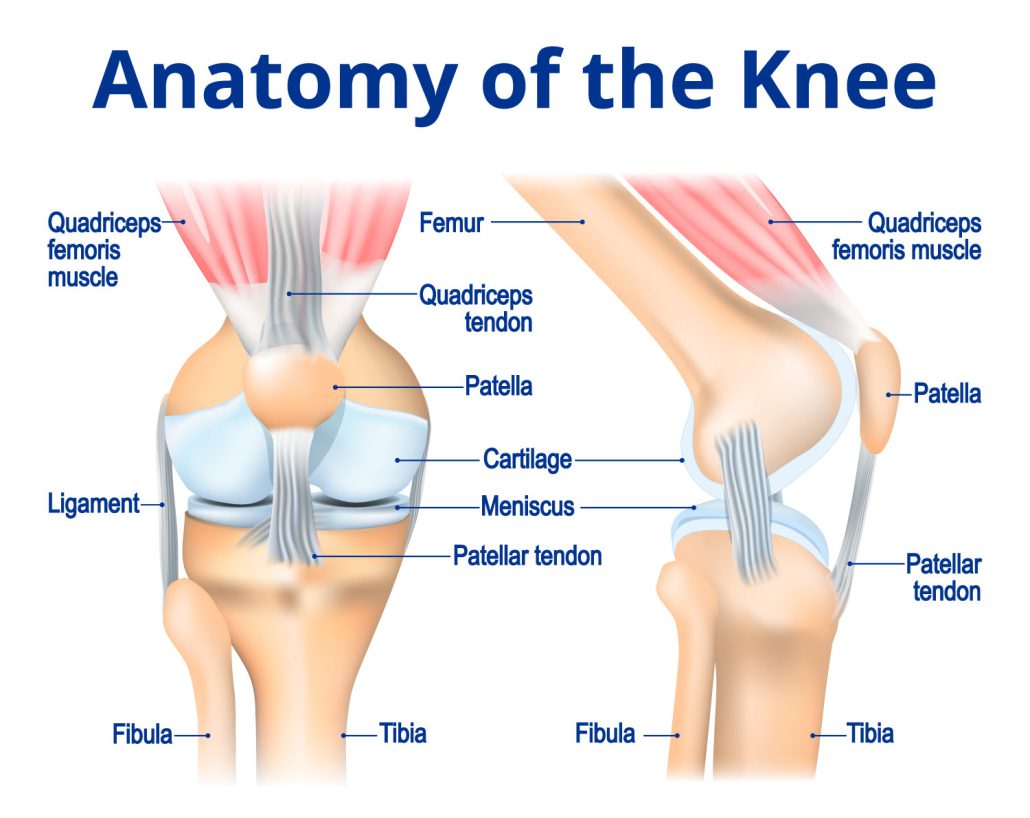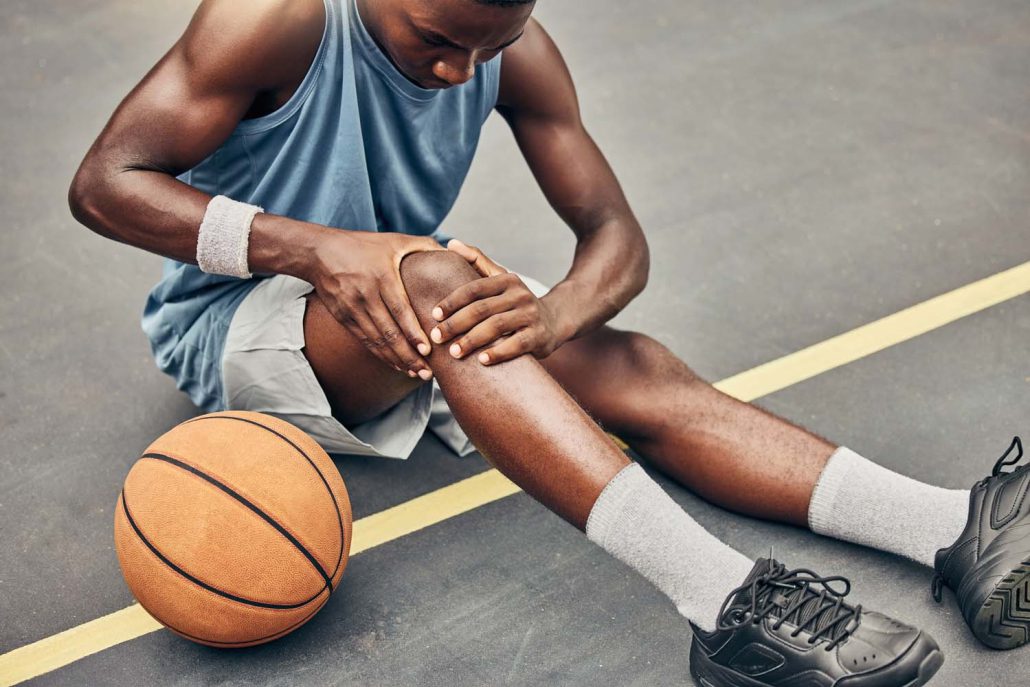CONDITIONS WE TREAT:
CONDITIONS WE TREAT:
Knee Pain Treatment in Bel Air, MD
Knee Pain Treatment in Bel Air, MD
Anatomy of the Knee

The ends of the three bones are covered with cartilage; a tough elastic material that cushions the joint. Also helping to cushion the knee are two C-shaped pads of cartilage, a lateral meniscus and a medial meniscus that lie between the tibia and the femur.
The knee has four main ligaments to help stabilize the joint, anterior cruciate ligament (ACL), posterior cruciate ligament (PCL), medial collateral ligament (MCL), and lateral collateral ligament (LCL).
There are two basic groups of muscles at the knee. In the front of the knee are the quadriceps muscles that work to straighten the leg out. In the back of the knee are the hamstring muscles which help to flex the knee.
What causes knee injuries?
- Falls
- Forceful twisting of the knee such as sports injuries
- High impact to the knee such as an auto accident
- Age
- Wear & tear
Most common injuries
- Fractures
- Dislocations
- Tears
- Sprains
- Arthritis
Treatment for knee injuries
There are many knee injuries where chiropractic and physical therapy will be able to heal the injury with no surgery. There are many injuries where surgery could have been avoided if treatment was obtained early in the injury.
The Knee and Sports
The knees are a complicated joint and in sports are often injured. A good example would be to think about basketball when the foot is planted on the court and the player moves their body rapidly in different directions. This also happens in soccer, football, and skiing.

What will I feel when I have injured my knee?
Usually, an injury will occur to the ACL with a sudden hyperextension or rotational force.
- Often the injured athlete will feel a “pop” in the knee and have sudden pain.
- The athlete may or may not fall to the ground.
- Skiers will usually fall.
- A soccer player or basketball player in mid-stride stopping suddenly and pivoting can suffer an ACL tear and still often be able to walk.
- The knee often swells after an ACL injury.
Will a knee injury heal itself?
Knee injuries are usually not simple. It is not uncommon for multiple knee structures to be hurt in an injury. An ACL, MCL, and lateral meniscal injury is a common “triad.” Because the knee is such a complicated joint most knee injuries will need therapy to heal properly and prevent reinjury.
Our doctors will perform an exam and order X-rays or MRIs as needed. Once they have the needed information, they will customize the treatment plan that is right for you and your condition.
Our providers will use multiple services and techniques that work best for you and your condition. Chiropractic adjustments, decompression, physical therapy such as electric stimulation and manual therapy, physical therapy exercises, massage therapy, and acupuncture.
No matter the cause, the trusted professionals at Susquehanna Spine & Rehab are here to help you overcome your knee pain!
My knee hurts but I didn’t injure it…
Knee pain is one of the leading causes of doctor visits. The most common of those being the medial meniscus. The angle from the hip down to the knee is not a straight vertical drop. Known as the Q Angle, this puts extra wear and tear on the internal portion of the knee. The wider the angle, the more stress. Also affecting the rate of wear is the shape of the foot and how it hits the ground. Orthotics are extremely beneficial in treating knee pain along with other services here.
Knee Pain Treatment Client Testimonials:
“My daughter started falling up the stairs at school and having severe knee pain for no apparent reason. I took her to the orthopedic surgeon who told me she had “sliding kneecaps” and recommended physical therapy. With working full-time and taking care of three children I wasn’t sure how I was going to fit this into my schedule. I noticed Dr. Lee’s office as I brought my other daughter to an eye appointment and called. To my surprise, Dr. Lee answered the phone himself. He gave me an appointment the very next week at a convenient time. Since then we have had a wonderful experience. Dr. Lee did a thorough exam and walked us through his entire treatment plan. Every appointment was made at a time convenient to my schedule. Heather has made wonderful progress and is now pain-free. Dr. Lee was always available for questions and kept me well-informed of her progress. I have and will continue to recommend him to my family, friends, and co-workers.”
– Heather, age 13
“I came to Dr. Lee with several aches and pains including pain in my knee, elbow, wrist, ankle, and back. I was nervous about receiving chiropractic treatment but Dr. Lee eased my concerns by thoroughly making sure that I was a safe candidate for adjustments. He took x-rays and explained to me why I was having these aches and pains – some pain was due to overuse/misuse; some because I’m a mother of two small children. After regular adjustments and Physical Therapy, my knee pain is gone, my elbow pain is gone, my ankle and wrist are improving AND I’m reducing the migraines I used to get too! Overall I’m in much better health.”
– Amy, age 31
“I came to Dr. Lee with several aches and pains including pain in my knee, elbow, wrist, ankle, and back. I was nervous about receiving chiropractic treatment but Dr. Lee eased my concerns by thoroughly making sure that I was a safe candidate for adjustments. He took x-rays and explained to me why I was having these aches and pains – some pain was due to overuse/misuse; some because I’m a mother of two small children. After regular adjustments and Physical Therapy, my knee pain is gone, my elbow pain is gone, my ankle and wrist are improving AND I’m reducing the migraines I used to get too! Overall I’m in much better health.”
– Amy, age 31
